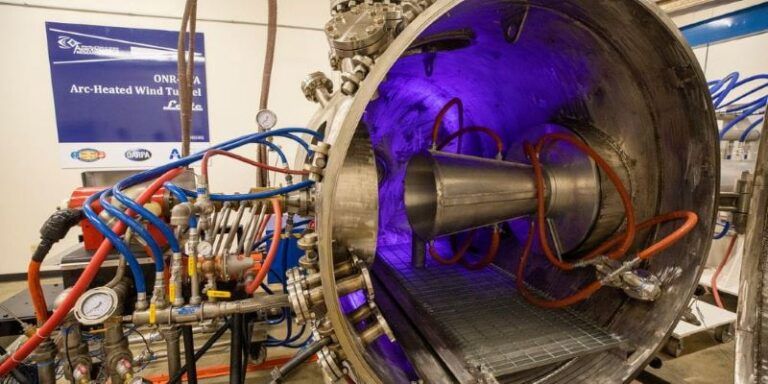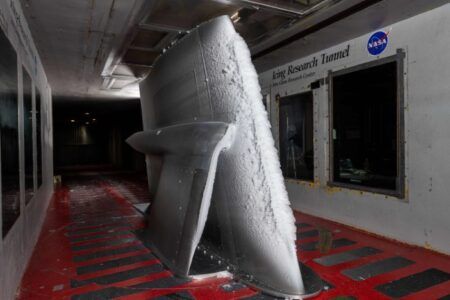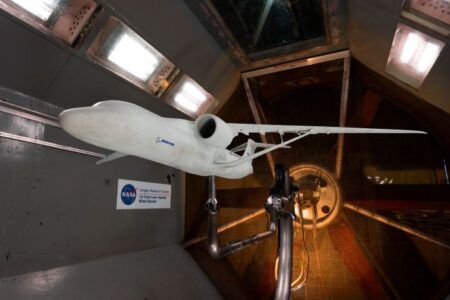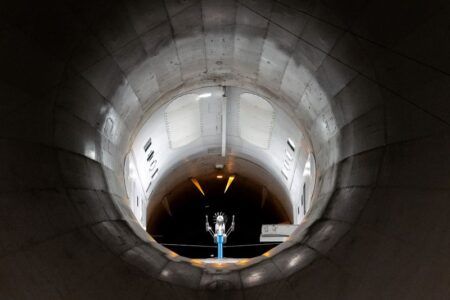Aerospace engineers in the US are running trials to determine the best way to test thermal protection materials for use on hypersonic air vehicles as part of a US$2.1 million R&D program
The project, which is being funded by the US Office of Naval Research involves researchers from the University of Arizona, the University of Texas at Arlington (UTA), and the University of Illinois at Urbana-Champaign. It aims to understand how to best reproduce flight-relevant hypersonic conditions during ground tests.
The University of Arizona, which is the lead institution on the project, has developed advanced thermal protection materials (TPS) for use on hypersonic vehicles that the three universities will test using different methodologies.
The UTA team will test the materials with an arc-jet wind tunnel, in which gases are heated to extremely hot temperatures and expanded to produce supersonic/hypersonic speeds by a continuous electrical arc between electrodes. This process can create gas temperatures exceeding the surface temperature of the sun, around 10,000 degrees Kelvin.
Arc-jet testing is required to test the materials at levels necessary for certification for use in hypersonic vehicles.
The Arizona scientists will use an oxy-acetylene torch, which is similar to a welding torch and is a technique widely used for screening materials at the early development stage.
The Illinois team will test the TPS materials with a plasmatron, which concentrates microwave energy to a specific point.
At each level of testing, the team will look for trends, similarities and differences that could signal if a material’s performance is promising, consistent and suitable for use at hypersonic speeds.
Luca Maddalena, professor of aerospace engineering and director of UTA’s Aerodynamics Research Center said, “The Navy really wants us to help understand the TPS materials’ response, trends and differences among the various testing methods that are progressively used throughout the development of new TPS materials, starting from the early screening stage up to the arc-jet testing and qualification.
“This knowledge will contribute to faster development of new critical materials for hypersonic applications anchoring various levels of ground testing to relevant hypersonic flight.”
UTA possesses the only university-operated, large-scale, arc-heated wind tunnel in the USA capable of simulating high-impact pressures and high shear. Arc-heated wind tunnel facilities provide the only ground-based means of simulating hypersonic heating rates during entry, re-entry and hypersonic cruise in a reacting flow environment under flight-relevant durations.
Erian Armanios, professor and chair of UTA’s Mechanical and Aerospace Engineering Department said, “The future of aerospace is in hypersonics, and through this collaboration, Dr. Maddalena and the ARC are once again using our facilities to contribute to the development of materials that can withstand the extreme conditions of hypersonic flight and atmospheric re-entry to ensure the safety and reliability of hypersonic vehicles,”
This has been article modified from the original written by Jeremy Agor, College of Engineering at UTA and published here.





